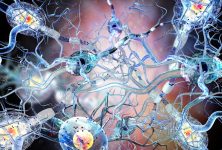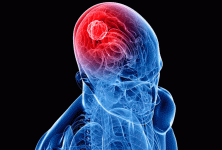
In the Congress, organized by the European Committee for the Treatment and Research of Multiple Sclerosis (ECTRIMS), held in the city of London, United Kingdom, the conference was highlighted: Multiple options for the treatment of Multiple Sclerosis.
This paper aims to present, from the point of view of a microbiologist, some aspects of the treatments for multiple sclerosis (MS) that address or are directed to act on the immune system (SI). To this end, the main components of the SI that are relevant in MS, and the role they play in defending against infections, will be detailed. As an example, the lessons learned in human immunodeficiency and its relevance for treatments in MS will be detailed. In turn, the challenge of diagnosing and recognizing opportunistic infections will be described.
The different mechanisms that intervene in the development of early MS (1). Emphasize that SI plays an important role in the pathogenesis of the disease. The early stages of the disease are mediated by inflammatory reactions in which the cells of the adaptive SI produce demyelination and cell damage. This inflammatory process ends up producing a progressive neurodegeneration.
The main SI actors responsible for the pathogenesis in MS are several, some of which are the therapeutic target to elaborate the drugs. Highlights include T cells, B cells, antigen presenting cells (APCs), Natural Killer cells (NK) and macrophages (2).
The SI is divided into innate or non-specific, in which the complement system and the phagocytes intervene, and the adaptive or specific SI, in which the antibodies and cellular immunity intervene. In MS, cell immunity is the most relevant. When cellular immunity is compromised, the risk of infection by viruses, fungi, bacteria and protozoa increases considerably. Microorganisms such as herpesviruses, candidas, mycobacteria or toxoplasma, are intracellular pathogens that can only be eliminated by cellular immunity, which, if pharmacological treatment focuses on cellular immunity, it is expected that the patient presents this type of infection. In fact, there are numerous opportunistic infections that are associated with biological therapies directed at adaptive or cellular SI (3). Many of the pathogens that cause this type of infection, despite coming from different origins, have a common characteristic: they produce long-term or persistent infections since they can remain for a long time suppressed by the host’s SI, but they take advantage of when the SI of the host presents some alteration (3).
The current challenge, therefore, is to be able to recognize the different types of pathogens causing opportunistic infections and to know if they are all relevant to the biological therapies available for MS. For this, it is important to perform a good safety profile for each of the drugs, monitoring the different opportunistic infections found during treatment with each of the therapies (3).
However, it is complicated because the epidemiology of these pathogens is very diverse, so in many cases it is very difficult to find all these pathogens in relevant quantities during the development of clinical trials.
For example, if during a clinical trial there are very few patients with hepatitis B infection, it will be very difficult to determine the risk of suffering from this infection associated with this particular therapy. In addition to a long time, large numbers and subgroups of patients are required to determine the specific risk of infection for a given therapy.
A model is proposed below to be able to project its results to the MS. Specifically it would try to analyze the natural history of infection by the human immunodeficiency virus (HIV), as far as lymphopenia is concerned. HIV is a very simple and clear example of what would be an immunosuppressive drug, since it directly attacks the cells of the SI in a very specific way causing a progressive decrease of the CD4 cells. There are different types of infections that can occur after HIV infection. One might think that this type of opportunistic infections will not be found when the IS is suppressed, however, the reality indicates otherwise. During the suppression of cellular IF, different and numerous types of pathogens can appear, as has been clearly seen in the context of HIV, so it could be foreseen that they could also happen in other contexts of depression of cellular immunity.
In turn, it must also be considered that for opportunistic infections to develop, it takes a long time, even many years after the infection, for this reason many of the causative pathogens can not be found during the period of development of the clinical trials, because to its short duration.
Finally, it should be noted that there is a clear relationship between the level of immunosuppression, that is, between the number of CD4 cells, and the type of opportunistic pathogens that can be found, at least in the context of HIV (4). This has also been demonstrated in other contexts, such as idiopathic CD4 lymphopenia (5), or even in patients who have received a transplant; it could be deduced then that the level of suppression of cellular immunity can predict the type of opportunistic infections that are going to be found.
RELEVANCE FOR TREATMENTS IN MULTIPLE SCLEROSIS
The relevance of lymphocytopenia for MS treatments is diverse.
First, lymphocytopenia is associated with opportunistic infections, as has been demonstrated in the context of immunodeficiencies, HIV, or other infections, as well as in the context of transplant patients due to immunosuppressive therapy. Secondly, it should be remembered that clinical trials are designed primarily to assess the efficacy and “direct safety” of a drug as a treatment for MS. At the same time, it should be noted that patients with known risk of opportunistic infections, such as those who have already presented this type of infection, are underrepresented in clinical trials, with which the understanding of the way to date The treatment affects the risk of certain opportunistic infections is based mainly on reported cases.
Finally, remember that all opportunistic infections observed in the context of an immunosuppressive treatment have been observed in patients with HIV. Therefore, HIV can constitute, until there is robust data in patients with MS, a provisional model to anticipate and evaluate patients at risk of opportunistic infections.
To conclude the presentation, the case of a 36-year-old woman with congenital toxoplasmosis, a completely unexpected disease, is described below.
Toxoplasma is a parasite that causes long-term infections in humans. If the infection occurs before pregnancy, it is not a problem for future pregnancies since the SI suppresses the parasite, however, this only happens if the person is immunocompetent. If the infection occurs during pregnancy and in immunocompromised people, the parasite can completely affect the fetus.
In the case presented, the woman was seropositive for toxoplasma, which is why she had been infected with the parasite many years before gestation. One year before becoming pregnant, she suffered a severe episode of colitis and received immunosuppressant treatment, however, the dose was reduced shortly afterwards due to leukopenia.
The 3-month ultrasound showed no alteration, nor did the ultrasound of the 20 weeks, however, at 28 weeks the woman noticed fewer fetal movements, so another ultrasound was done. The results were lamentably surprising when observing a severe hydrocephalus; all the cerebral signs observed were consistent with the signs of congenital toxoplasmosis, a diagnosis that was confirmed in a postmortem analysis of the fetus at 31 weeks of gestation. But how can that be possible? Virtually no one would consider a case of such characteristics. This type of situations, in fact, only seen in cases of patients with HIV or with a significant immunosuppression, however, the patient’s leukocyte values (greater than 3 x 109 cells / l) were not indicative of presenting a severe immunosuppression.
From this case you can learn two important things; First, that this type of opportunistic infection may be underrecognized because toxoplasma serology is not usually evaluated before women become pregnant. Secondly, that with the determination of total leukocytes, without evaluating the different subtypes, it can be thought that a patient is immunocompetent, however, it does not reflect the immunological state of the patient. In this particular case, for example, the infection presented by the patient seriously compromised her SI.
CONCLUSIONS
From the point of view of a microbiologist, one could conclude with the following observations:
> The therapy directed against the SI inevitably leads to compromising the defense system against pathogens:
– Pathogens associated with persistent / latent infections that are usually problematic.
– Some infections may only appear after a long period of treatment.
– In the context of a compromised SI, the presentation of the disease can differ markedly.
– Monitoring the count of lymphocyte subtypes can help in risk stratification, although more research is still needed on this aspect.
> It is necessary to work with multidisciplinary teams to develop protocols to:
– Evaluate the risk and the requirement of primary and secondary prophylaxis.
– Vaccination.
– Continuous monitoring.
– Diagnosis and rapid treatment.
> More research and investment is required to evaluate mechanisms “outside the IS” that modify the disease.
REFERENCES
- Mahad DH, Trapp BD, Lassmann H. Pathological mechanisms in progressive multiple sclerosis. Lancet Neurol. 2015 Feb;14(2):183-93.
- Barten LJ, Allington DR, Procacci KA, Rivey MP. New approaches in the management of multiple sclerosis. Drug Des Devel Ther. 2010 Nov 24;4:343-66.
- Winthrop KL, Novosad SA, Baddley JW, Calabrese L, Chiller T, Polgreen P, et al. Opportunistic infections and biologic therapies in immunemediated inflammatory diseases: consensus recommendations for infection reporting during clinical trials and postmarketing surveillance. Ann Rheum Dis. 2015 Dec;74(12):2107-16. doi: 10.1136/annrheumdis-2015-207841. Epub 2015 Sep 22.
- Microbiology and Immunology On-line. Dr. Richard Hunt. Virus de la inmunodeficiencia humana y el sida. Virología. Capítulo 7, parte 3. Disponible en: http://microbiologybook.org/lecture/hiv3.htm ; último acceso: agosto 2016.
- Ahmad DS, Esmadi M, Steinmann WC. Idiopathic CD4 Lymphocytopenia: Spectrum of opportunistic infections, malignancies, and autoinmune diseases. Avicenna J Med. 2013 Apr;3(2):37-47.
Publicaciones relacionadas

Congreso ECTRIMS – Abordando el sistema inmunológico en la esclerosis múltiple: Visión de un microbiólogo








